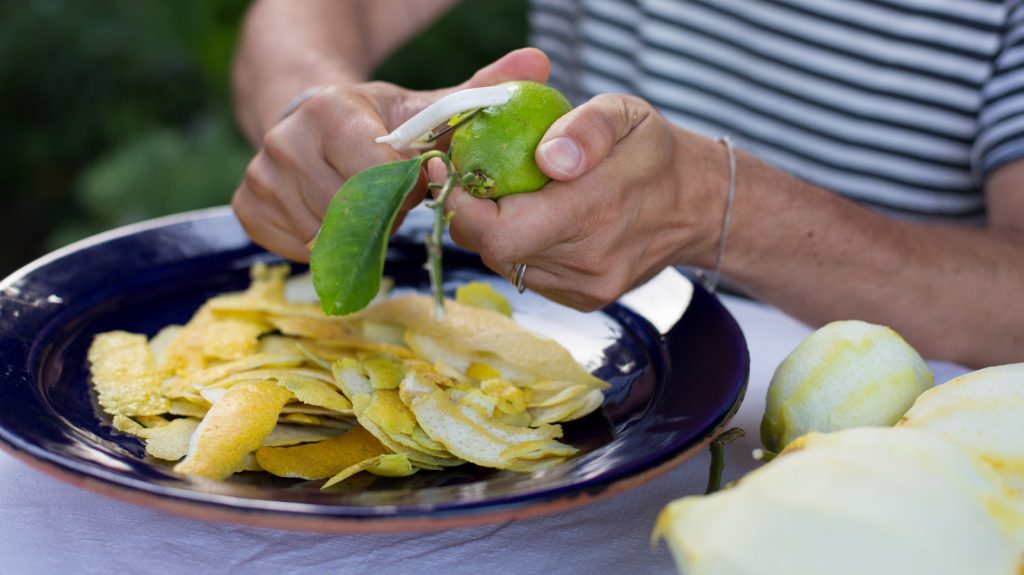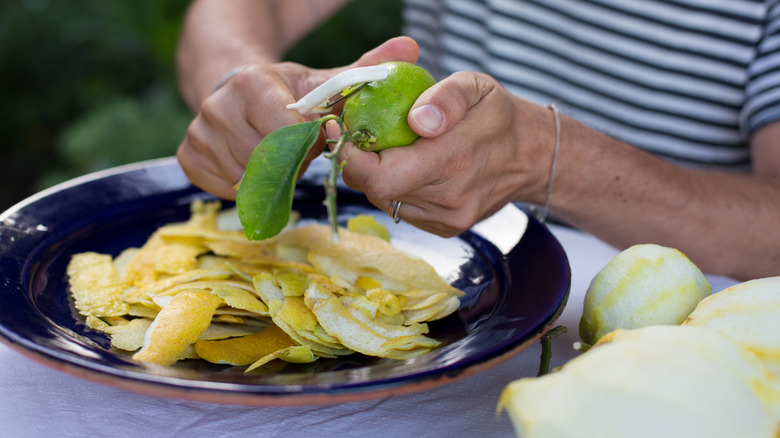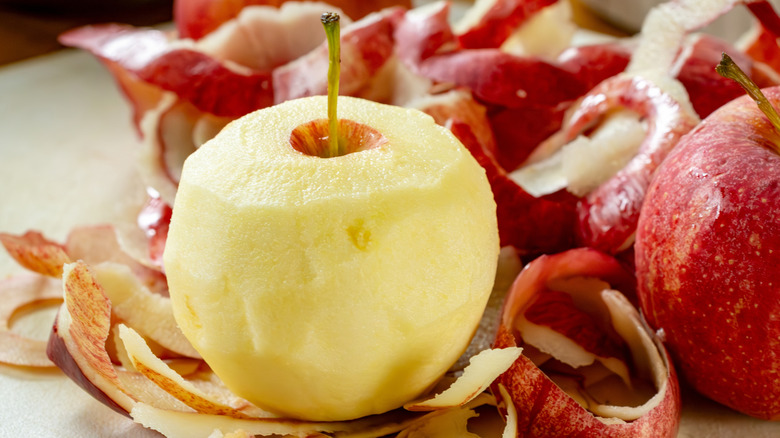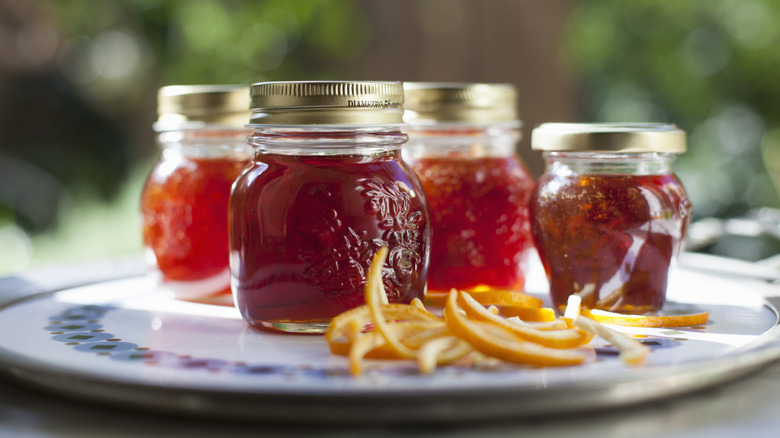
It’s so easy to love the juicy flesh of ripe peaches, the velvet slide of mango, the sweet, giving bite of a summer plum. We’re taught to hunt for what’s ripe and yielding and discard the rest, sweeping it into the trash without a thought. Peels are just the scaffolding, right? The packaging, something to get through. Maybe composted, if you’re feeling virtuous, but almost never the part that’s enjoyed in its own right. But here’s the twist: Fruit peels are exactly what you should be saving if you want to make a jam that’s full of character and depth. The peels you’d normally toss are the secret ingredient to a bright, aromatic fruit spread.
Every cook learns sooner or later that what you do with what remains can change the way your food tastes; think of tossing Parmesan rinds into soup for a deep, complex, umami undertone, or crisping potato skins for a snack, or turning stale bread into croutons. The kitchen has always rewarded people who make something out of what’s left. If you believe, as the OG American food writer M.F.K. Fisher did, that thrift and pleasure aren’t opposites, but partners, you may begin to look at fruit peels with new a new eye. Fisher taught us that a good kitchen is not just about the practicality of feeding the body, but also about claiming joy and meaning from the resources at hand. The pieces we usually overlook or discard have shaped entire traditions of cooking, especially in households where nothing could be wasted.
What fruit peels have to offer
Fruit peels are nutrient powerhouses, the most concentrated source of everything we hope to get from fruit, health wise: Fiber, antioxidants, bioflavinoids, volatile essential oils, and color. When you bite into an apple, most of the skin’s subtle tannin and tartness are left behind if you discard the peel. The peel also contains high amounts of pectin, which is what makes jams set without adding anything extra. For many fruits, the peel contains up to three or four times more fiber than the flesh, and antioxidants can be even more concentrated in these outer layers.
Studies show that the pigments and aroma compounds found concentrated in the skins of apples, plums, cherries, and citrus are linked to anti-inflammatory and antioxidant effects, which you won’t get by tossing them. Peels even positively influence the way jam tastes and even how it behaves. Apple skins, for example, can give a subtle rosy tint and a little extra sharpness to a jam. Citrus rinds bring both bioflavinoid-bitterness and brightness to marmalades, rounding out what might otherwise be one-note sweetness. Even ginger peels can be useful, adding gentle heat and fragrance.
On top of flavor and nutrition, there’s the environmental argument. The USDA estimates that as much as a third of the food in American households goes uneaten, and a good portion of that is fruit and vegetable scraps. Using peels in jam is a good way to stretch what you buy, and it’s one of the simplest habits you can build to reduce food waste without much extra effort. A bowl in the fridge and a basic jam recipe are enough.
How to make jam with fruit peels
All you need is a small collection of peels; apple, pear, stone fruit, or citrus. Store them in a container in the fridge, or even in the freezer if you want to collect over time. When you’ve got about 2 to 4 cups, you’re ready to jam.
Chop the peels, then place them in a saucepan and add an equal weight of sugar and enough water to just cover. A squeeze of lemon juice adds brightness and helps extract pectin. Bring the mixture to a boil, then lower to a simmer, stirring occasionally and skimming any foam. The peels will soften and the syrup will thicken as the pectin is released. Depending on the fruit peels used this can take from 25 minutes upwards; go longer for a deeper, more caramelized flavor.
You can blend the jam, or leave it chunky if you prefer. To check for doneness, spoon a little onto a chilled plate and run your finger through it; if it holds a line, it’s ready. Pour the hot jam into clean jars and seal tightly. Properly stored in a cool, dark, dry place, the jam can keep for up to a year. Once opened, put it in the fridge and eat within a month.
There’s no limit to the flavor combinations you can try. Apple peels pair well with ginger or rosemary, citrus peels shine with honey or vanilla, and stone fruit skins get along with a crack of black pepper or a splash of bourbon. Try combining different types of peels, or using what’s in season. The only real rule is to use what you have; allow the scraps to shape the recipe. Once made, spread it on toast, stir it into yogurt, or add it to a cheese plate. The process is forgiving, the results surprising, and the reward is a kitchen that feels ultra resourceful.










